A problem of plenty
Who to pick - strokemakers or stodgy accumulators? Or keepers who can more than just get by with the bat?
Sa'adi Thawfeeq
02-Mar-2010

Aravinda de Silva: Mad Max turned batting genius • Mike Finn Kelcey/Getty Images
In Sri Lanka's cricket history one area where they have never been short of talent is the middle-order batting. Sri Lanka have been blessed with some of the most exciting batsmen the game has ever seen.
From Mahadevan Sathasivam, regarded as the country's best batsman in the pre-Test era, to Aravinda de Silva, arguably the best in the Test age, Sri Lanka have produced an array of exciting stroke-makers the likes of whom cricket has been fortunate to witness.
Amaong those during the pre-Test years who could probably have made it to this shortlist were Frederick C de Saram, Sargo Jayawickrama, Michael Tissera, Anura Tennekoon, Ievers Gunasekara and Stanley Jayasinghe, whose cricketing talents were not fully exposed due to the lack of international competition. These players were unfortunate to belong to an era when Sri Lanka was still struggling to attain Test status. They played purely for the love of the game, in an age where cricket was accepted as a gentleman's game and was not influenced by money.
Those who missed out in the list in the Test era include Duleep Mendis, the dashing batsman and former captain who was nicknamed the "Moratuwa Mauler", and Russel Arnold, whose level-headed batting provided a calming influence to the middle-order.
If picking the openers is going to cause a headache to the selectors of this all-time XI, naming the middle-order is an even bigger task because of the abundance of talent on offer.
The contenders
 |
A slim, elegant and exceptionally gifted right-hand batsman with a marvellous sense of timing and a style slightly reminiscent of Rohan Kanhai. It is a tragedy that by the time Sri Lanka was granted Test status, Dias, who had played a major part of his career in the pre-Test era, was almost 30. He played in only 20 Tests and became the first Sri Lankan to make 1000 Test runs.
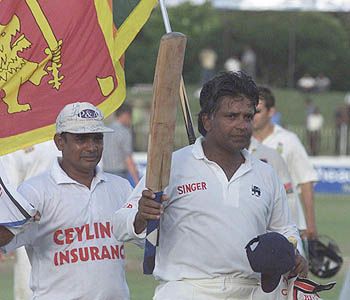 |
A street-fighting left-hand batsman. His Test batting average of 35.69 and four hundreds from 93 Tests hardly do justice to his precocious talent. Ranatunga was in charge of the team for 11 years from 1988 and was widely recognised as a master tactician, leading his team to victory in the World Cup final of 1996 against arch enemies Australia.
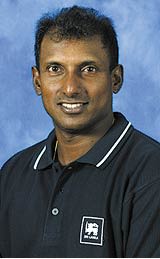 |
A strokemaker of the highest class, de Silva had the bit of genius in him that allowed him to hit good balls to the boundary, which made it hard for opposing captains to plan against it. During the early part of his career he was known as a dashing if inconsistent batsman and was given the name Mad Max, but one season with English county Kent marked the turning point of his career. He is best remembered for playing the key role in Sti Lanka winning the 1996 World Cup final against Australia: he contributed with a fine unbeaten century to go with his two catches and three wickets.
 |
Not blessed with natural talent like some of his team-mates and predecessors, through hard work and sacrifice Sangakkara has worked himself to the level of a top-class specialist batsman who could fit into any current world XI. His Test batting record has improved drastically since he gave up keeping in Tests, which enabled him to concentrate solely on his role as a No. 3. Batting has never looked like an effort to him. He has the ability to pick up the length quickly and plays the short ball very well. Equally good against spin, pace and swing.
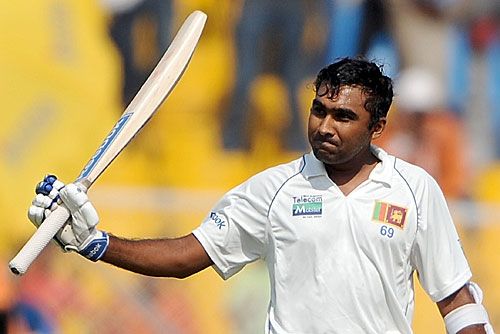 |
Impressively balanced at the crease, Jayawardene is quick on his feet, and once he gets a start he is capable of batting for long hours, as his 27 Test hundreds bear testimony. He ranks among the toughest batsmen in the game today. Jayawardene was the first Sri Lankan captain to score a Test triple-century, making 374 off 572 deliveries against South Africa in 2006, and sharing a world Test record partnership of 674 with Sangakkara.
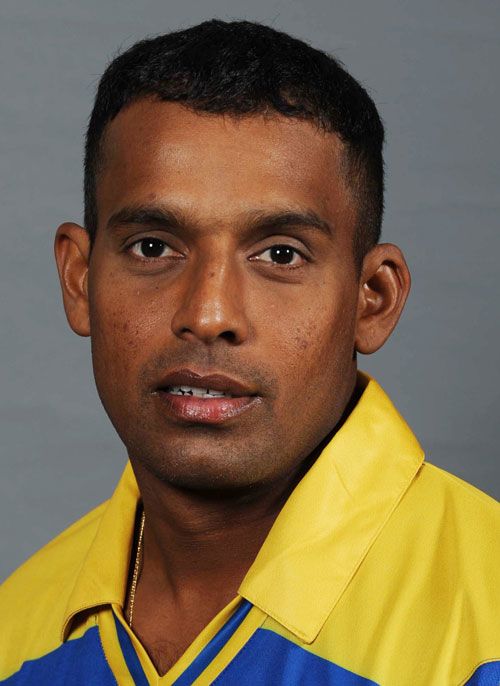 |
Primarily an offspinner, Samaraweera was quick to realise that as long as Muttiah Muralitharan was around there was no place in the side for another similar spinner, so he switched over to becoming a batsman. But it was not until 2001 that he got a break in Test cricket. Despite being dropped on a couple of occasions for poor form, Samaraweera has cemented a permanent spot in the middle order where in 2009 he started to contribute massive scores including back-to-back double-hundreds in Pakistan. Not an elegant batsman to watch, but very effective in his strokeplay.
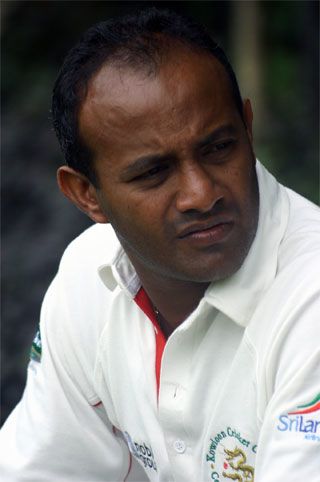 |
Like Sangakkara, Tillakaratne came into the Test side as a wicketkeeper-batsman but later shed his gloves to become a durable middle-order batsman who could wear the opposition down with his defensive play. He was not an exiciting batsman to watch but played several match-saving innings and was a prolific run-getter in Tests.
 |
Few ever mention the name of Gurusinha when Sri Lanka's World Cup victory is spoken of, but he it was who provided the base for strokemakers like de Silva and Ranatunga to play their natural game. A tall and compact left-hander who made his Test debut as a keeper, Gurusinha took on the mantle of Sri Lanka's No. 3, a position he fulfilled for many years before his rather premature exit after the World Cup.
We'll be publishing an all-time Sri Lanka XI based on readers' votes to go with our jury's XI. To pick your middle order click here